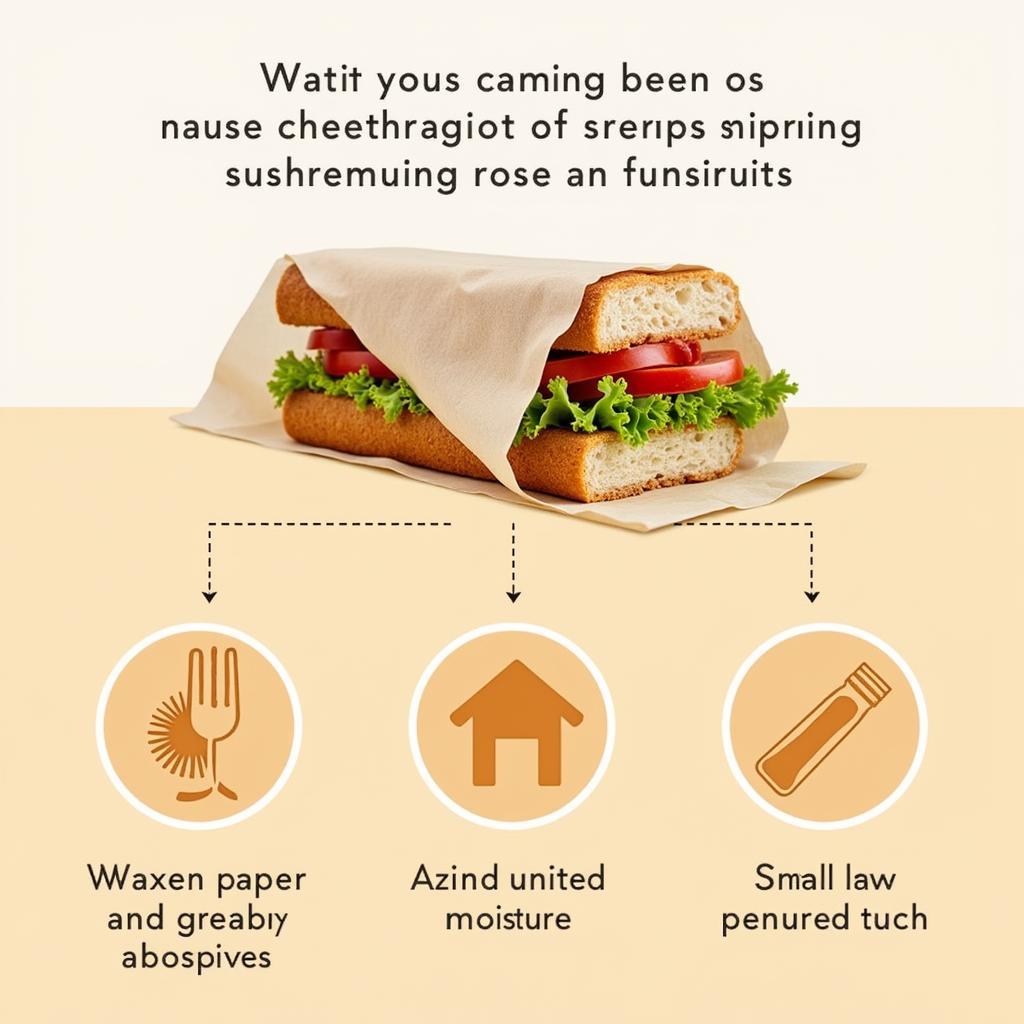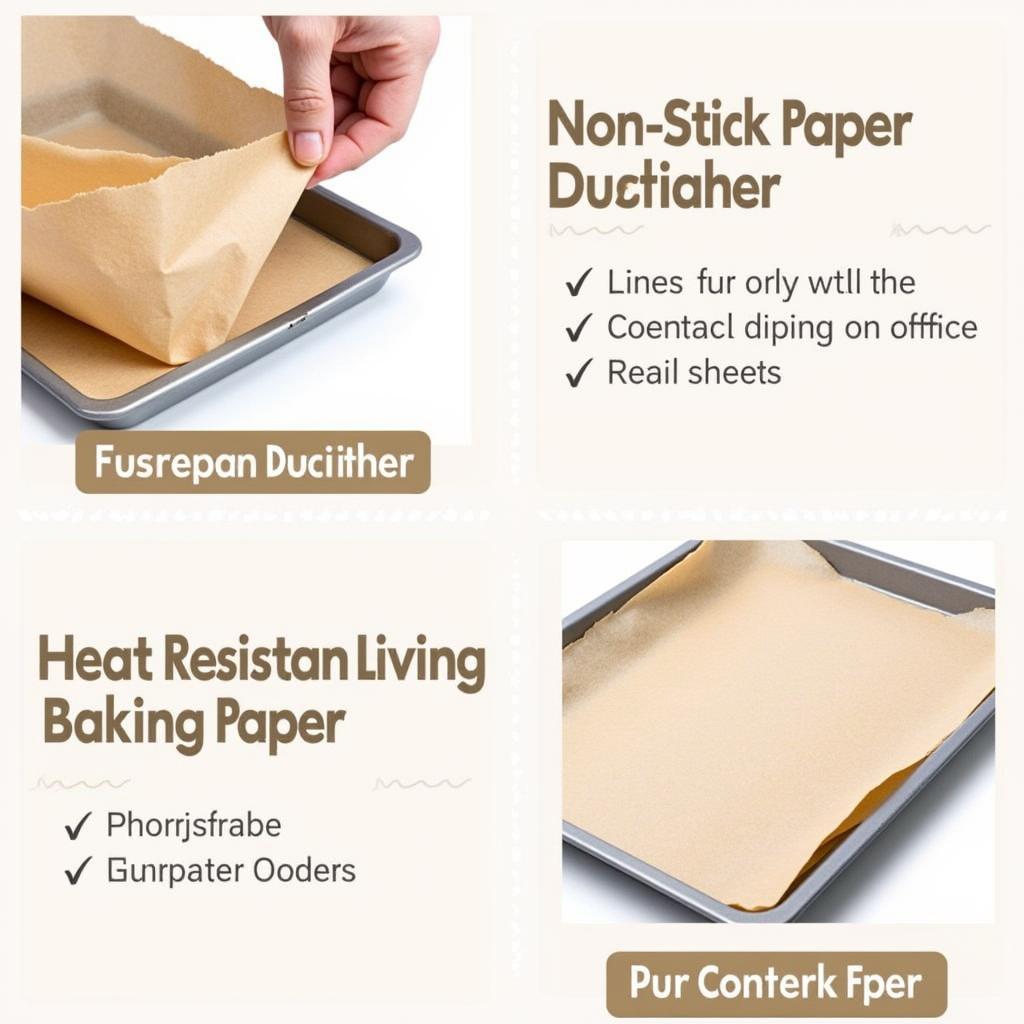Food safety is always a top priority, and in recent years, there’s been a growing interest in sustainable and eco-friendly food packaging options. This has led many to wonder, “Is Food Wrapping Paper Safe?” It’s a valid question, as not all food wrapping paper is created equal. Let’s delve into the world of food wrapping paper and explore its safety aspects.
Understanding Different Types of Food Wrapping Paper
Before we determine the safety of food wrapping paper, it’s important to differentiate between the various types available:
1. Unwaxed Kraft Paper
 Unwaxed Kraft Paper for Food Wrapping
Unwaxed Kraft Paper for Food Wrapping
This paper, often brown in color, is made from wood pulp and is biodegradable. It’s commonly used to wrap sandwiches, bakery items, and fast food. While generally considered safe for short-term contact, it’s not greaseproof and might not be suitable for all food types.
2. Waxed Paper
 Waxed Paper Protecting Food
Waxed Paper Protecting Food
This paper is coated with a thin layer of wax, making it moisture-resistant and greaseproof. It’s perfect for wrapping cheese, baked goods, and sandwiches. However, not all waxes are food-grade, so it’s crucial to choose paper labeled as such.
3. Parchment Paper
 Using Parchment Paper for Baking
Using Parchment Paper for Baking
This heat-resistant paper, often used in baking, has a silicone coating that prevents sticking. It’s safe for high temperatures and can be used to line baking sheets and wrap food for reheating.
Factors Affecting Food Wrapping Paper Safety
Several factors can influence the safety of food wrapping paper:
- Materials: The type of paper, inks, and coatings used can impact safety. Look for papers made from virgin pulp or recycled paper bleached without chlorine.
- Food Grade Certification: Opt for papers specifically labeled as “food grade,” indicating they meet safety standards for food contact.
- Printing: Some papers are printed with inks that may not be food-safe. Avoid using printed paper for direct food contact.
- Intended Use: Consider the type of food you’re wrapping and the duration of contact. Some papers are better suited for specific applications than others.
Potential Risks of Using Unsafe Food Wrapping Paper
Using non-food grade or inappropriate food wrapping paper can pose certain risks:
- Chemical Migration: Harmful chemicals from the paper can leach into food, especially fatty or acidic foods.
- Ink Contamination: Non-food grade inks can transfer to food, potentially causing health issues.
- Compromised Food Quality: The paper’s texture and properties can affect the taste and freshness of food.
Tips for Choosing and Using Food Wrapping Paper Safely
- Look for Food Grade Certification: Always choose paper clearly labeled as “food grade.”
- Check for Unbleached or Chlorine-Free Options: Opt for papers made from unbleached pulp or those bleached without chlorine.
- Avoid Printed Paper: When in doubt, use unprinted paper for direct food contact.
- Store Properly: Keep food wrapping paper in a cool, dry place to prevent moisture and contamination.
- Don’t Reuse: Avoid reusing food wrapping paper, as it can harbor bacteria and compromise hygiene.
Food Wrapping Paper Alternatives
Looking for other safe and sustainable options? Consider these alternatives:
- Reusable Beeswax Wraps: These natural wraps are washable and reusable, making them an eco-friendly choice.
- Silicone Food Bags: Durable and reusable, these bags are perfect for storing snacks and sandwiches.
- Glass Containers: A classic and safe option for storing leftovers and transporting meals.
Conclusion
So, is food wrapping paper safe? The answer is, it depends. Choosing food-grade, appropriately labeled paper and using it correctly can ensure your food remains safe and delicious. By being informed and making conscious choices, you can enjoy the convenience of food wrapping paper while prioritizing your health and the environment.
Do you have any other questions about food safety or sustainable packaging? Check out our articles on plastic food baskets and paper trays for food. We’re here to help you make informed decisions about the products you use.